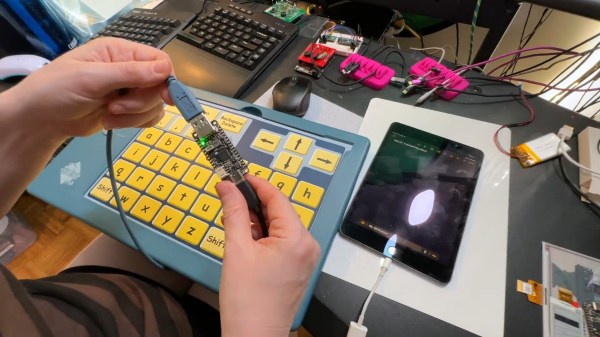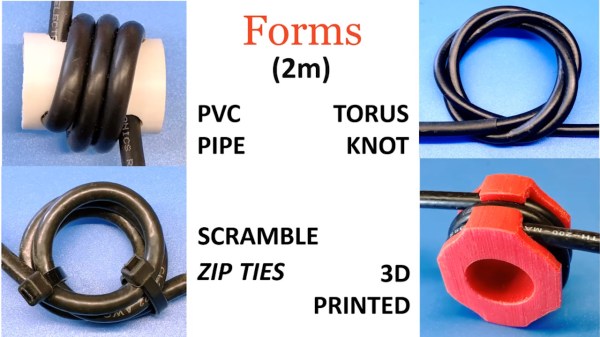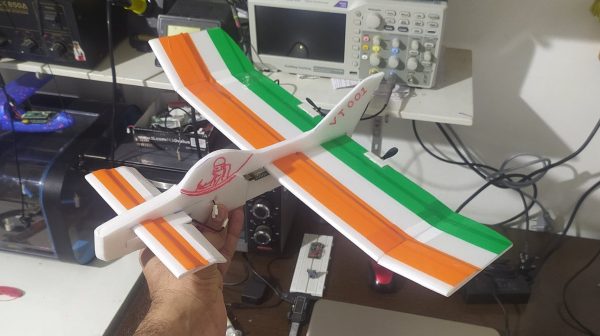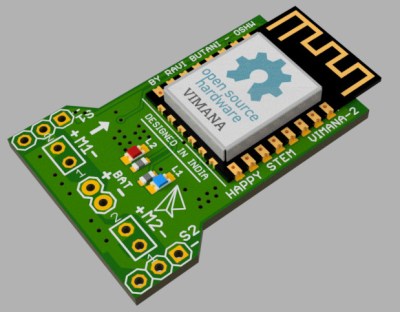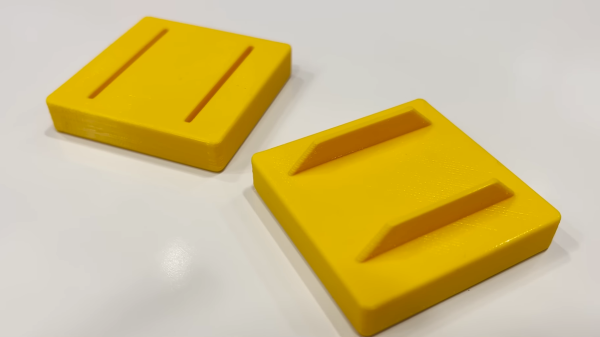The Spectronic Intellikeys was an innovative keyboard-like accessibility device that used special plastic overlays that change its functionality. While a USB version of the accessible keyboard exists, it doesn’t work like a normal HID device, so it’s not plug and play as you might expect. It’s also no longer in production or supported by the manufacturer. Where industry falls down, the community steps in, right? To that end, Adafruit has built a tool for interfacing with these useful accessibility devices.
The key is the way the Intellikeys was intended to work with a computer. It was designed to download its firmware from the host machine, using special drivers that are only compatible with certain versions of Windows. That means you can’t use it with iPads or Chromebooks, for example.
To get around this, Adafruit used an RP2040 Feather configured as a USB host to talk to the Intellikeys. It queries the device, determines which overlay it currently has installed, and provides it the necessary firmware. On the other end, the Feather enumerates as a regular USB HID device. That allows it to work with a wide variety of tablets, computers, and even smartphones.
If you’ve got an Intellikeys USB device and miss using it, this could be just the thing you need. Meanwhile, you can check out some of the other interesting keyboard designs we’ve featured over the years.
Continue reading “RP2040 Gets Intellikeys Keyboard Up And Running”

